This update provides a snapshot of new data on the Scottish economy and households.
There remains lots of uncertainty for businesses and workers. Our latest Scottish Business Monitor with Addleshaw Goddard released earlier this week found that day-to-day activity remains constrained and expectations are for firms to operate at a fraction of their usual capacity in the next six months.
This echoes many of the indicators in this article. Whilst there have been improvements from the severe lows at the height of the lockdown, economic indicators on the whole remain subdued and many households are continuing to see financial hardship.
Chart 1: Share of businesses which are temporarily closed or have paused trading, UK nations, 1st June – 12th July: in the first two weeks of July, the proportion of businesses surveyed by the ONS who operate in Scotland reporting temporary closure has again fallen. The change in the latest two-week period is the largest fall since the start of lockdown, with just over 7% still reporting they are closed.
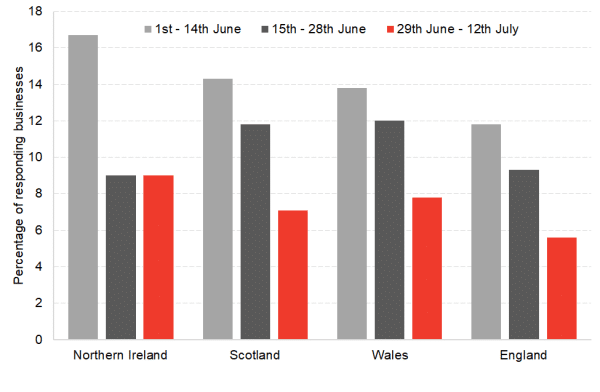
Source: ONS BICS
Chart 2: Share of businesses reporting a decrease in turnover outside of normal range, UK nations, 1st June – 12th July: a majority of businesses who are trading are still seeing reduced turnover outside of normal range. The share of Scottish businesses reporting reduced turnover was 61.2% during the first half of July (highest share out of all UK nations).
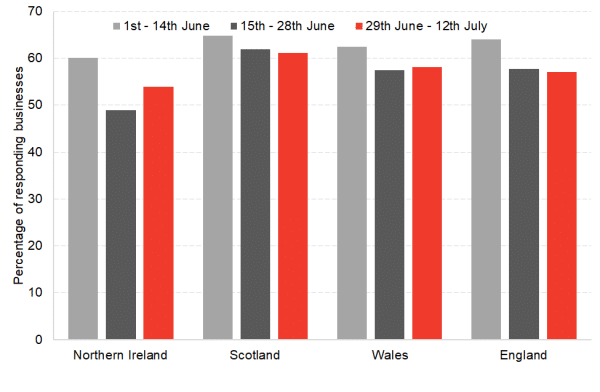
Source: ONS BICS
Chart 3: Mobility of people in Scotland and the UK, week commencing 19th July: the number of people staying at home has been steadily declining over the past weeks but remains circa 13% above trend. The gap between Scotland and rest of the UK in mobility to transit stations has narrowed but it remains notable for workplaces (-46% in Scotland vs. -37% in the UK) and for retail venues (-42% in Scotland vs. -31% in the UK).
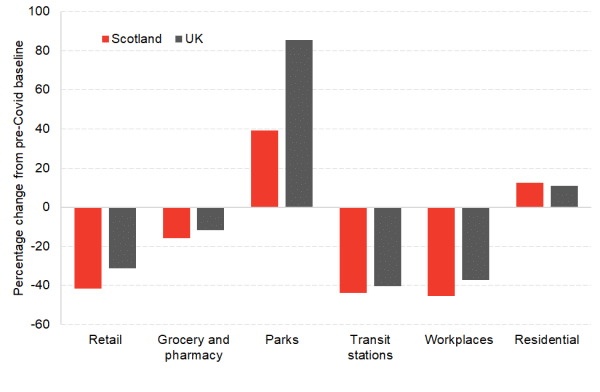
Source: Google Mobility Trends
Note: The reported data for Scotland is an average of the mobility index for Scotland’s largest cities: Edinburgh, Glasgow, Aberdeen, Dundee, Stirling
Chart 4: Google searches for products and services in Scotland, 5th January – 26th July 2020: online searches for hotels, restaurants and bars has returned to pre-Covid levels in the second half of July. Interest in cars has also returned to pre-Covid levels. However, interest in holidays remains around 35% lower than the levels seen last year.
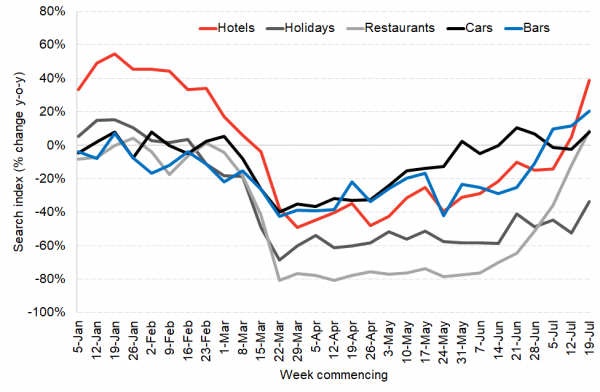
Source: Google Trends
Chart 5: LBTT returns in Scotland by week, 2016 – 2020: the number of property transactions has fallen significantly since the start of the pandemic and was yet to recover to pre-crisis levels in June. A total of 4,970 notifiable land and building transactions were reported in June 2020, 1,380 more than the previous month but 5,630 fewer than June 2019. A total self-reported tax liability of £25.7m was declared by taxpayers in June 2020, £7.6m higher than May 2020, but £24.5m lower than June 2019.
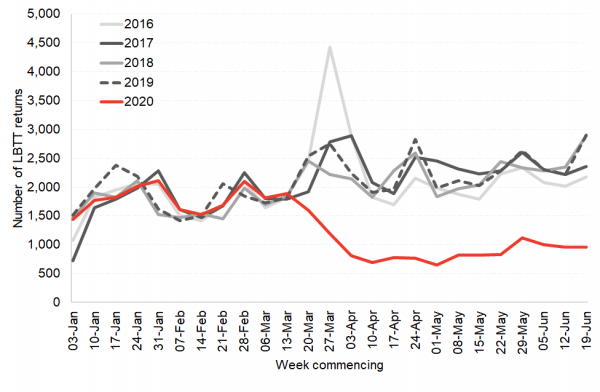
Source: Revenue Scotland
Chart 6: Google searches for ‘redundancy’ in Scotland and the UK, 5th Jan – 19th Jul 2020: In last week’s labour market update we discussed the likely rise in unemployment yet to come from the unwinding of the government’s furlough and self-employment income support schemes. Online searches for redundancy have remained much higher than normal.
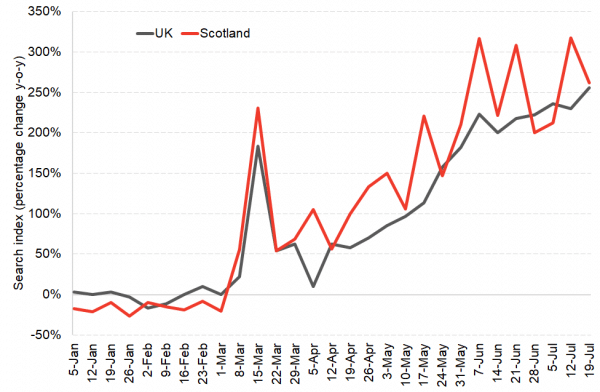
Source: Google Trends
Chart 7: Scottish households’ level of concern about their financial situation, 24th – 29th June 2020: circa a third of all surveyed Scottish households were fairly or very concerned about their income. Around a fifth of households had concerns about paying utility bills and council tax. 18% of all households were concerned about paying for food and essentials.
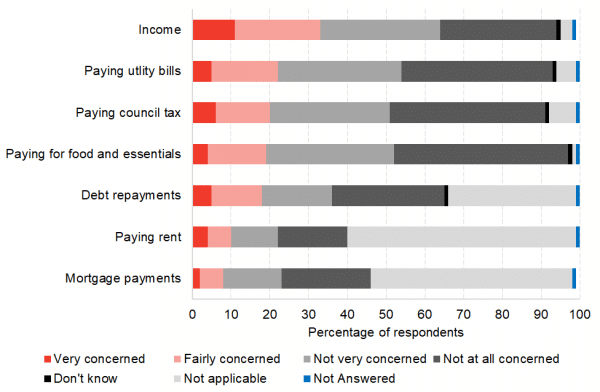
Source: Citizens Advice Scotland
Note on our real-time indicator’s analysis:
We review newly available data each week and provide a regularly updated snapshot of indicators which can provide information on how the economy and household finances are changing week to week. This allows us to monitor changes in advance of official data on the economy being released and also to capture key trends that will be missed by measures such as GDP. Each week we investigate new sources from known data sources and use publicly available data.
Authors
The Fraser of Allander Institute (FAI) is a leading economy research institute based in the Department of Economics at the University of Strathclyde, Glasgow.
